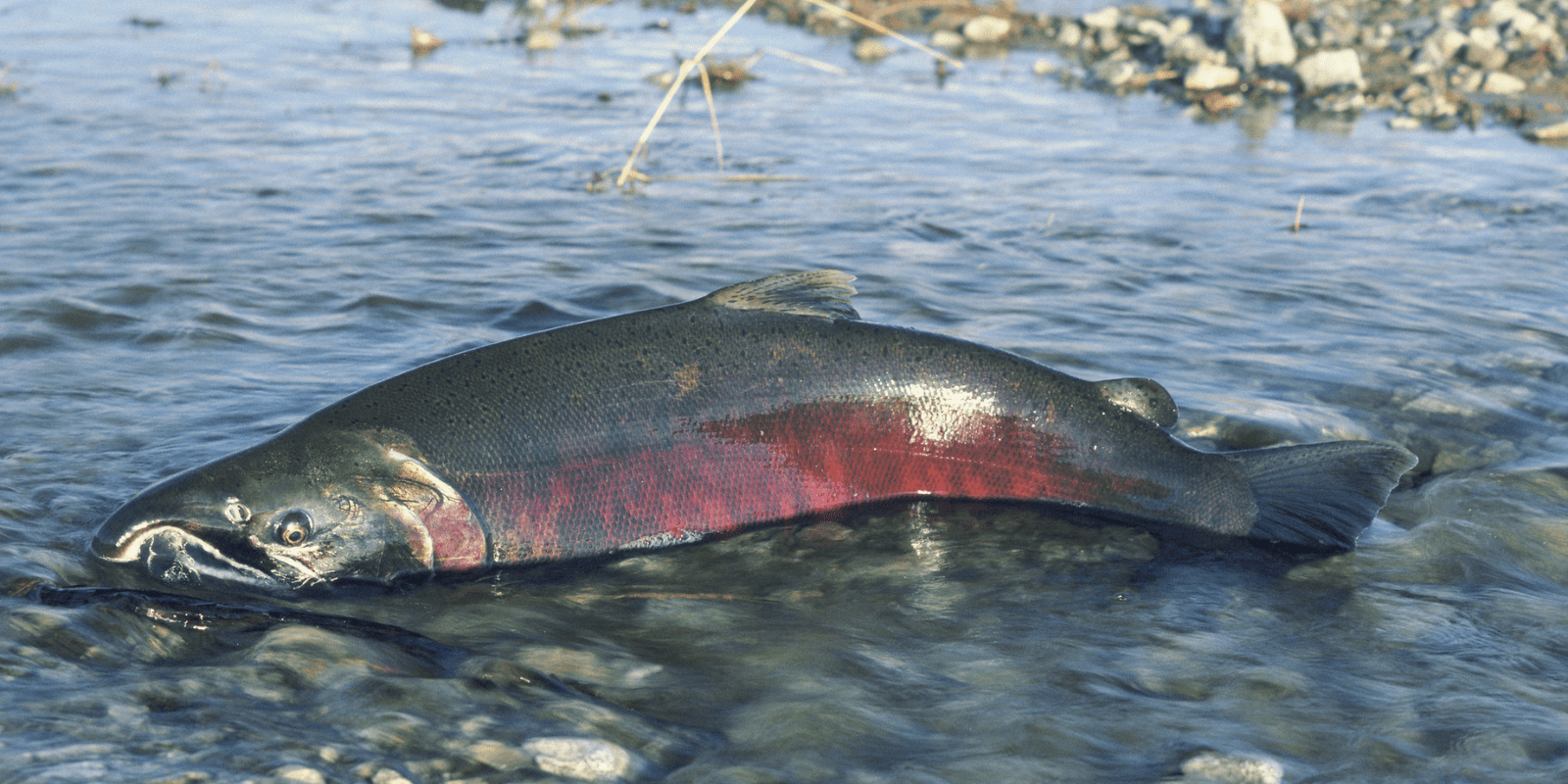We have much more to do and your continued support is needed now more than ever.
NW Forging a Collaborative Course of Action for Snake River Salmon

Hot water is killing cold-water fish. This isn’t news. Scientists have agreed for some time that warming river temperatures are a critical threat to Columbia and Snake River salmon. What is news, however, is Washington state’s historic step to do something about it. In May, for the first time, Washington’s Department of Ecology exercised its authority under the Clean Water Act Section 401 to protect its own water quality and fisheries. It announced it would regulate eight dams to help cool waters that are fatal for the Columbia and Snake rivers’ iconic salmon runs.
The news doesn’t end there. A just-published analysis of heat pollution in the rivers by the U.S. Environmental Protection Agency (EPA) agrees. In short, the EPA reaffirms what the scientists have been telling us all along: Temperatures today continue to rise. The effects of the dams combined with the cumulative effects of climate change are pushing water temperatures past state water quality standards for extended periods of time.
Double trouble has salmon in hot water
Salmon are already struggling with the negative impacts of the lower Snake River dams. However, it’s not just the powerhouse interaction and turbines that threaten their passage. The large slack water pools of slow-moving water stall the salmon’s outgoing migration toward the ocean. What should be a four-day journey can now take Snake River salmon more than 40 days, as the fish try to find a current to take them downstream.
Spawning upstream, salmon run into double trouble: barriers and warming waters. The longer passage is compounded by warming waters, so warm they become fatal, significantly reducing salmon survival. This became abundantly clear in summer 2015 when 96% of endangered adult Snake River sockeye salmon died during their long upriver migration through the lower Columbia and Snake Rivers. These fish cannot survive the combined effects of barriers, hot air, and warm water, low flows, and the additional heating caused by mainstem dams and associated reservoirs.
Climate change is exacerbating existing elevated temperature problems, and the severe problems faced in 2015 will increase in frequency. National Oceanic and Atmospheric Administration (NOAA) scientists have determined that Snake River sockeye are extremely vulnerable to climate change, due in part to their 900-mile long migration through exceptionally warm reaches of the Snake River. Other salmon species are also suffering. This problem, first recognized in the 1990s, still remains largely unmitigated and will get worse as the climate continues to warm.
It’s time for a collaborative course of action
The science is indisputable: With limited resources in the existing hydro-system to cool the river, the restoration of the lower Snake River is the only action available that can substantially cool mainstem water temperatures long-term. However, all available information to date about the court-ordered National Environmental Policy Act (NEPA) review now being conducted indicates that federal agencies will not propose a plan to adequately address this critical issue. Minor tweaks are not an option, as suggested last spring in the wholly inadequate dam management options in the Columbia River System Operations Draft Environmental Impact Statement (DEIS).
Northwest residents and business owners want to chart a new course for Lower Snake River dams to save endangered salmon. So do our regional governors. Gov. Jay Inslee noted the DEIS plan falls short of Washington’s expectations to restore salmon and calls for an “active, collaborative, and visionary regional conversation.” Oregon Gov. Kate Brown stated the proposed plan “will not meet the expectations and needs of the citizens of Oregon and the region, nor provide adequate protection for salmon and steelhead …” She added: “This vision of the future can only be realized with leadership from and strong collaboration with the four states (Oregon, Washington, Montana, and Idaho).
We must restore the Snake River, combined with existing or modified cold water releases. No other action or actions can significantly lower summer water temperatures in the lower Snake and Lower Columbia Rivers long-term. The most exciting news is that scientists, Govs. Inslee and Brown, and Washington’s Department of Ecology are converging on this issue.
Tell Congress to invest in and restore the Snake River to create a healthy, intact river system that works for people, for fish, and for wildlife.
Take Action!





















